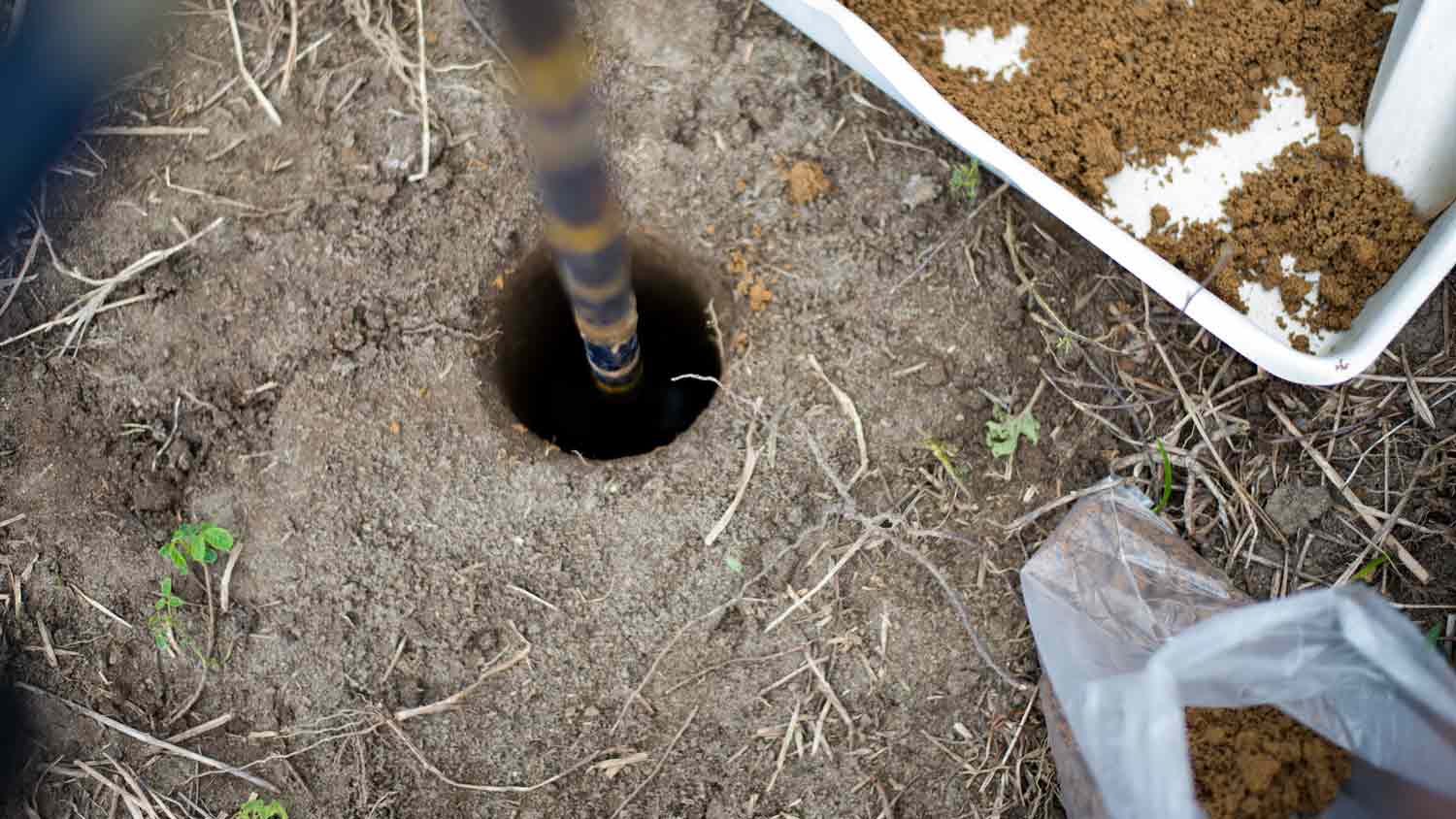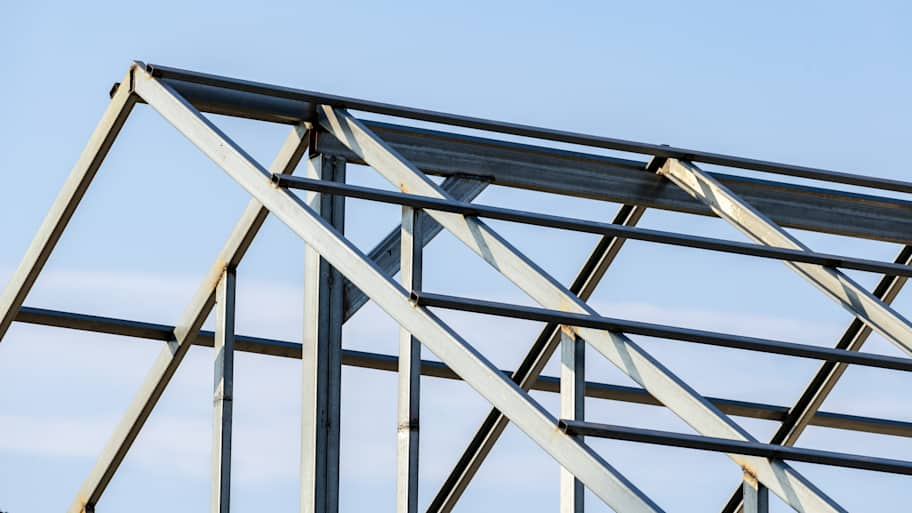
Winterizing a house depends on its type, size, location, and more. Our guide breaks down how much it costs to winterize a home.
A perc test costs $1,300 on average, and most homeowners pay somewhere between $750 and $1,900 for the service, depending on the property size and the purpose of the test.


Perc tests start at $150 for areas smaller than a quarter acre and can reach $3,000 for areas larger than one acre.
Manual perc tests range from $150 to $300, while perc tests that require an excavator cost at least $550.
On average, it costs an additional $150 for each hole dug.
Add-on services, such as land grading and septic tank installation, can increase prices by $1,000 to $18,000.
A perc test costs around $1,300 on average, and most tests cost somewhere between $750 and $1,900. You could pay as little as $300 for a single hand-dug hole perc test or as much as $3,000 for machine-dug holes on a large, 1-acre property. Your cost can also vary based on the purpose of the test, property accessibility, and more.

Perc test costs can fall anywhere between $300 and $3,000, depending on a few key factors.
The size of your property will often be the biggest cost factor when it comes time to do a perc test. Testing often involves taking data from multiple points across your property to see how the land drains as a whole, and each additional testing site you need will add to your total.
Most municipalities have regulations that dictate the maximum distance apart the holes for testing must be, which means larger properties require more holes. The more holes you need, the more you’ll pay for the labor to dig and test. You can expect to pay around $150 per hole you need dug.
| Property Size (acres) | Holes Needed | Perc Test Cost |
|---|---|---|
| 1/4 | 1–4 | $150–$600 |
| 1/2 | 1–8 | $150–$1,200 |
| 3/4 | 2–12 | $300–$1,800 |
| 1 | 3–20 | $450–$3,000 |
The reason you’re scheduling a perc test may also dictate the number of holes you need and how far apart they must sit on your property, which means it will also have a direct effect on the price you’ll pay.
You may need a perc test for new construction if you’re planning on adding a septic system, if you need to replace or make changes to your existing septic system, or if you want to install a drainage system, like a French drain. Tests related to septic system installation or expansions will often be more expensive, as problems with percolation in a septic drain field lead to sewage backup, which is a health hazard.
It's important to ensure you have the right soil before starting your project. Hire a soil or geotechnical engineer to perform testing on your soil to make sure it's suitable for your construction.
There are two main types of perc tests: those using shallow, hand-dug holes and those that require deeper holes dug by an excavator. The type of holes will, once again, depend on the purpose of your test and local regulations for testing percolation rates on your land. If your test calls for larger holes that require the use of an excavator, you’ll pay more per hole. In most cases, deeper, wider holes will require an excavator.
| Type (Hole Depth) | Cost Per Hole |
|---|---|
| Manual (2 feet) | $150–$300 |
| Manual (3 feet) | $200–$300 |
| Excavator (4 feet) | $550–$800 |
| Excavator (5 feet) | $625–$900 |
| Excavator (6 feet) | $700–$1,000 |
The accessibility of your property will also play a role in your pricing, especially if you need an excavator to maneuver onto your property to dig the holes. Homes in remote areas can drive up the costs, as can properties with excessive tree coverage or generally limited access for heavy machinery.
You’ll likely see prices climbing to around $3,000 if your perc test requires larger, deeper holes, but an excavator can’t maneuver onto your property. In that case, your money will go toward manual labor instead of equipment rental fees.
Where you live also has an effect on perc test costs, as each municipality makes its own regulations for how many holes are necessary, as well as the depth of the holes. You can speak with your local building department or health department to discuss what’s necessary in your area for the type of perc test you need.
You can do a DIY perc test for preliminary testing or to see if your soil conditions are suitable for a garden bed or some other landscaping feature, but you’ll always need to hire a professional for a formal perc test if you need permission to construct or make changes to a septic system, to install a drainage system, or to regrade your land.
In many areas, your professional will need to be licensed, and your local health inspector or a building inspector will need to be present to witness the results of the test and make the final decision on whether or not you pass your perc test. As such, you’ll need to hire a local soil tester to get a proper perc test done in most cases.
A perc test is often the first step in a much larger landscaping project, so you should consider budgeting for the following alongside your perc test costs. Perc tests are good for two to five years, depending on local regulations, so saving for the test and the post-testing projects is a good idea.
Cost to install a septic system: $3,600–$12,400
Cost to replace a septic system: $5,000–$12,000
Cost to install a French drain: $500–$18,000
Cost to grade land: $1,000–$3,300
Perc test costs can go up to around $3,000, and unfortunately, there are only a handful of things you can do to save on the total.
Choose the minimum number of holes necessary: Your local building department or health department will likely have requirements for the number of holes you need. You’ll pay an additional $150 per additional hole, on average, so make sure you’re only testing the required number of holes.
Test only the soil you need to test: For some projects, it may not be necessary to test percolation across your entire property, especially if you have a larger plot. Speak with local authorities to determine the smallest portion of your land you’d have to test for building approval.
Get multiple quotes: Your local municipality will often have its own fees for perc tests that aren’t negotiable, but you can always get quotes from multiple soil testing professionals to see which is the most affordable. Just be sure all contractors you’re getting quotes from understand exactly how many holes you need and what size and depth they need to be.
Make sure you need a perc test: Perc tests are more expensive than many other tests, so make sure you need a perc test and not a soil test. Perc tests are required by law for changes to septic systems and, in many cases, land grading and drainage system installation. If you’re looking for soil data for grass and garden health or to check for contamination, it might be time for a soil test instead.
Home is the most important place on earth, which is why Angi has helped more than 150 million homeowners transform their houses into homes they adore. To help homeowners with their next project, Angi provides readers with the most accurate cost data and upholds strict editorial standards. We extensively research project costs to develop the pricing data you see, so you can make the best decisions for you and your home. We rely on reputable sources, including the U.S. Bureau of Labor Statistics, academic journals, market studies, and interviews with industry experts—all to ensure our prices reflect real-world projects.
Want to help us improve our cost data? Send us a recent project quote to [email protected]. Quotes and personal information will not be shared publicly.
From average costs to expert advice, get all the answers you need to get your job done.

Winterizing a house depends on its type, size, location, and more. Our guide breaks down how much it costs to winterize a home.

Home elevator costs depend on the size and type of lift, if it needs retrofitting, and the number of floors. Our guide outlines all residential elevator costs.

Strong floor joists are the key to a structurally safe home. The cost of floor joist repair will often come down to what is causing the problem.

Curious about how to frame a house like a professional? While it's rarely a DIY job, understanding the process can prepare you for your upcoming home construction.

Your metal stud framing cost depends on multiple factors, including the project's size, the gauge of steel, and labor prices in your location, plus add-ons.

Worried about charging too much—or too little—as a general contractor? Learn what factors go into markup, how to calculate it, and how to communicate pricing to customers.